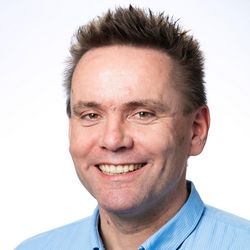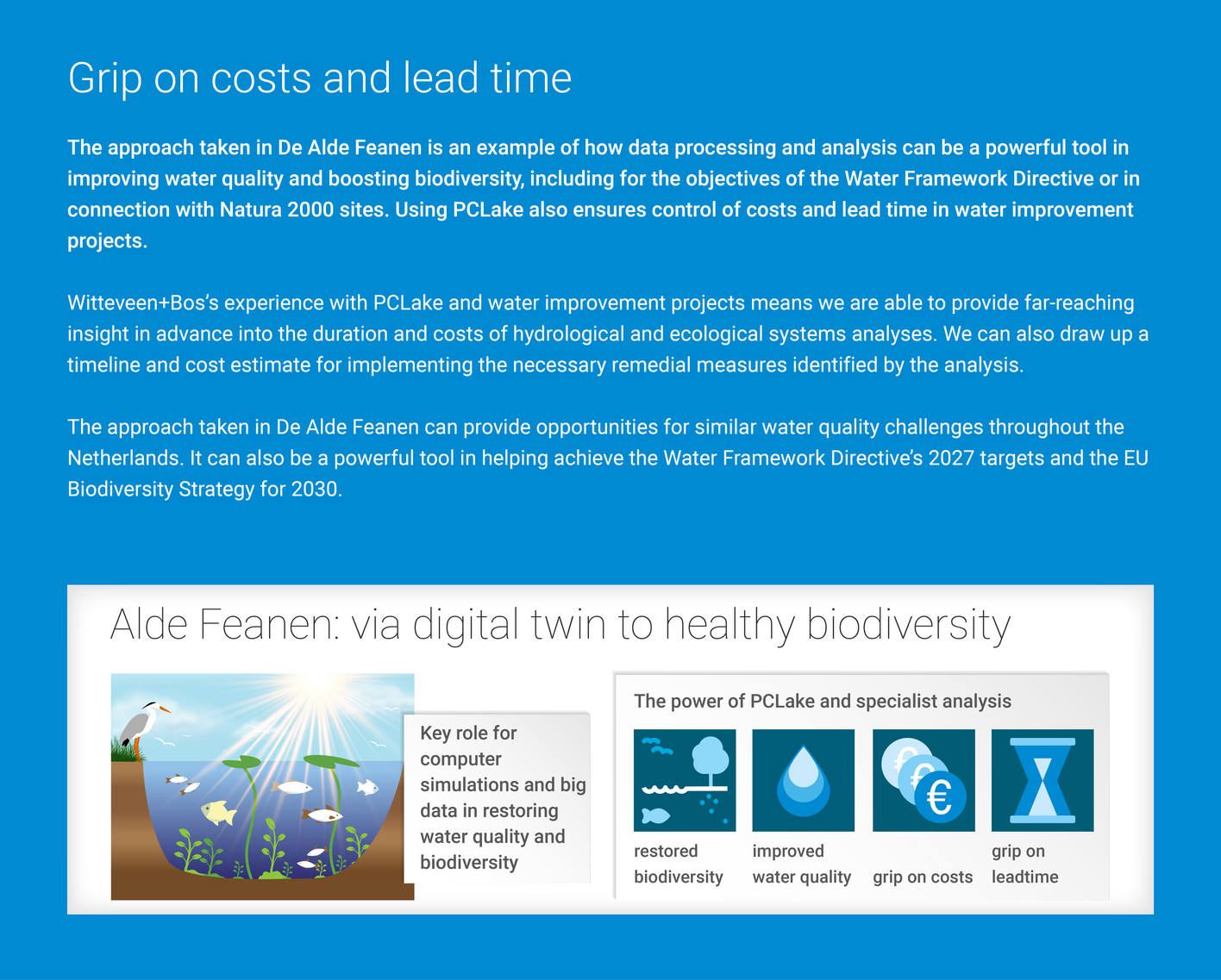De Alde Feanen: to healthy biodiversity via a digital twin
In many of the lakes in the De Alde Feanen national park in Earnewâld, the underwater nature had significantly deteriorated. Under assignment to the Province of Fryslân, Witteveen+Bos worked on restoring the ecological balance. Computer simulations of individual lakes using big data and digital twins played a key role in increasing biodiversity.
Submerged aquatic plants are essential for healthy biodiversity. Such vegetation facilitates the presence of a wider range of fish species as well as many types of insects, insect larvae, water fleas and other crustaceans.
For decades, De Alde Feanen had struggled with murky, turbid water that made it impossible for sunlight to reach the lakebeds. This was problematic as sunlight is essential for the growth of submerged aquatic plants. We conducted a hydrological and ecological systems analysis to identify the cause of the turbid water.
For the purpose of this analysis, we made extensive use of PCLake, a high-end, open-source software application for making digital twins of lakes. By entering the relevant parameters and simulating and analysing expected ecological developments, we were able to identify the cause of the poor water quality and find the solution for it.
Tipping point
Broadly speaking, shallow lakes exist in one of two possible ecological states: turbid and algae-filled or clear and plant-rich. The presence of fertilisers in a lake (especially phosphorus compounds) plays an important role in determining which state prevails. Each individual lake has its own unique critical load at which it changes from being clear and plant-rich to turbid and algae-filled.
An equally unique (but much lower) critical load also exists at which a lake changes from turbid and algae-filled to clear and plant-rich. The complexity of the situation lies in the fact that both loads differ for each lake, dependent on parameters such as surface area, water depth, soil composition, residence time, shore type and biotic processes.
Running simulations with PCLake allows the critical loads for a given lake to be determined. By then combining (domain) knowledge of water and substance flows, soil quality, composition and interaction with the food web, it is possible to determine which measures are needed to achieve a sustainable transition to a clear, plant-rich state. The ten distinct lakes in De Alde Feanen were analysed in this manner.
Over the past twenty years, Witteveen+Bos has invested heavily in refining and expanding PCLake, including through partnerships with various universities. PCLake’s added value compared to other applications is that it integrates ecology. This means that plants, algae and fish stocks are also considered. A dataset of 42 lakes provides the benchmark for informed searches into the parameters required to improve water quality.
Food web
The hydrological and ecological systems analysis of the lakes in De Alde Feanen showed that the turbid, plant-poor water was not (or no longer) caused by external influences. The problem was primarily due to an unfavourable food web composition, in which bottom-dwelling fish that consumed water fleas dominated.
More specifically, an excessive presence of bottom-dwelling bream, together with smaller fishes, was found to be the cause. The breams’ rooting around the lakebeds had made the water turbid and was continuously disturbing the soil, affording aquatic plants no chance to thrive. An additional problem was the presence of many fish that consume water fleas. Normally, algae are removed from water by water fleas; in these lakes, this occurred to an insufficient degree, further contributing to turbidity.
Helping hand
For biodiversity to return, more was needed than just improving the water quality – the PCLake calculations and accompanying analysis by our specialists made this clear. It was therefore decided to give nature a helping hand through a programme of measures primarily aimed at reducing fish numbers and increasing opportunities for submerged aquatic plants.
On a single occasion, fish numbers were significantly depleted so that bottom-dwelling and water flea-eating fish could no longer keep the water turbid. Submerged aquatic plants (or remnants of them) were also introduced to the lakes from other bodies of water so that sufficient seeds, spores and vegetative remnants were present to allow healthy aquatic plant development. Some lakes were also dredged to remove excess silt layers.
Diversity of birds, fish and insects
Following this human intervention, the tremendous resilience of nature ensured that all the lakes in De Alde Feanen became clear and plant-rich, a situation that has been maintained to this day and been accompanied by a sharp increase in biodiversity.
Many species of submerged aquatic plants have returned. The fish population has also changed from being a bream-dominated community to one that includes pike, tench, roach and perch; and mute swans and gadwall have increasingly been found on and around the lakes – herbivorous birds that have benefited from the recovery. A spectacular recovery of water-bound insects is also visible, including a greatly increased number of dragonflies such as the scarlet dragonfly and two Habitats Directive species: the yellow-spotted whiteface and the lilypad whiteface.
Share this page

Bob Brederveld




